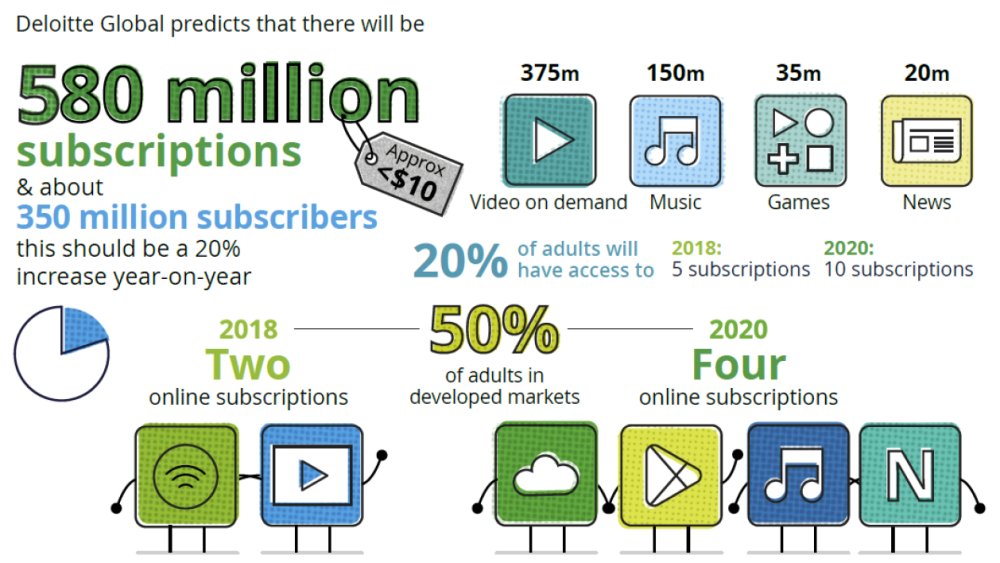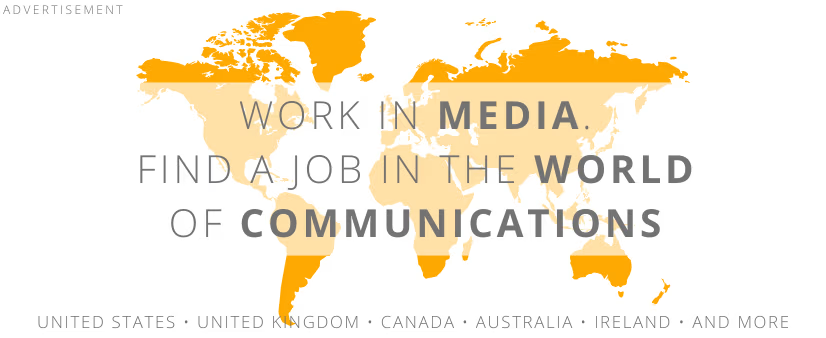 source: Deloitte, TMT Predictions 2018
source: Deloitte, TMT Predictions 2018The TMT Predictions 2018 report by Deloitte experts forecasts that by the end of 2018, half of adults in developed countries will have at least two online media subscriptions, increasing to four by 2020. The cost of these subscriptions, primarily covering television, movies, music, news, and press, will average below $10 per month in 2018. The global subscriber count is projected to reach 350 million people, with 580 million subscriptions, most of which will be VoD (375 million).
Up to 20% of adults in developed countries will subscribe to, or have access to, at least five paid online media subscriptions, and by 2020, this figure could rise to ten.
- "The subscription model has been long known in traditional media, such as print magazine subscriptions. Now, we are witnessing its growing popularity online due to several factors," says Jakub Wróbel, Senior Manager in Deloitte`s Consulting Department. - "The primary drivers are increasingly attractive content available on multiple devices and a growing customer base willing to pay for it."
This trend is also supported by technological advancements and faster internet connections. In Poland, recent years have seen the growth of video services like Netflix, Player.pl, and ShowMax, which also invest in local productions. The trend of "binge-watching," where entire seasons of shows are available at once, allows viewers to spend hours watching on TVs, computers, or phones without interruption.
According to Deloitte’s research, this trend is especially prevalent among millennials, where:
- 90% admit to binge-watching,
- and 38% do so regularly (data from U.S. viewers).
- "As this trend continues, content providers and advertisers will look for ways to leverage it to better reach customers. At the same time, we can expect an increase in content suitable for binge-watching," comments Jakub Wróbel.
The End of Advertising in Media? A Bold Prediction
According to the authors of the "TMT Predictions 2018" report, as media reach increases, revenue per reader, viewer, ad impression, or click is decreasing. Deloitte experts emphasize that, in this situation, some publishers see attempts to generate revenue from online advertising as a waste of time. Consequently, content creators may focus on increasing subscription revenues and creating more varied, audience-specific subscription packages.
This shift is supported by research on ad-blocking trends. Deloitte experts estimate that, by 2018, 10% of adults in North America will engage in at least four simultaneous ad-blocking actions on computers and mobile devices, reflecting a condition known as “ad-phobia.”
Data from 2017 published by Page Fair reveals that:
- Ad-blocking software is installed on 615 million devices worldwide
- 11% of global internet users block ads
- Global ad-block usage increased by 30% in one year
In Poland, ad-block usage reached 33% among internet users in 2017, placing Polish users among the highest in the world for ad-block adoption.
COMMERCIAL BREAK
New articles in section Media industry
Advertising market 2025. Poland, Europe and the World
Marcin Grządka
The global advertising market is growing by 8.8% in 2025 and will reach a value of 1.14 trillion dollars. The industry result in Europe records slightly lower dynamics, at the level of 5.8%. In this comparison, Poland performs clearly above the average. We will record an increase of 8.9% this year and a value of 18.56 billion PLN - estimates WPP Media in the annual report "This Year Next Year".
The print media market 2025. Three global trends
Krzysztof Fiedorek
The market value is 359.53 billion dollars, yet the erosion is visible to the naked eye. The decline for newspapers will amount to -2.3 percent. Despite this, print retains strength: it generates 76 percent of subscription revenues and enjoys 82 percent consumer trust. The future of the industry is defined by hybrid strategies and niche specialization.
Journalism in the age of AI. Why people prefer humans over machines
Krzysztof Fiedorek
Only 12% of people accept news created solely by AI, while 62% prefer those written by humans. At the same time, only 19% notice labels indicating the use of artificial intelligence, while younger audiences ask AI to explain the content to them. These are the findings of the Reuters Institute report on artificial intelligence in media.
See articles on a similar topic:
Numbers Stations in Radio. For Puzzle and Cryptography Enthusiasts
Krzysztof Fiedorek
They broadcast seemingly meaningless strings of numbers and letters, sometimes short, encrypted messages. Some even play music between coded transmissions or broadcast propaganda. For over a hundred years, number stations have puzzled radio enthusiasts and mystery hunters. What do we know about them?
Influencers and social video rule information. Digital News Report 2025
Krzysztof Fiedorek
Seconds of vertical clips set the future of news. TikTok, YouTube and an army of influencers pull viewers away from TV sets and newspaper pages. Whoever masters this new pulse seizes not only attention but also control of the story.
Disinformation and Fake News. Experts Discuss Challenges for Journalists
RINF
The pandemic, followed by the war in Ukraine, triggered a massive wave of disinformation in media and social channels. Experts at the Impact’22 Congress in Poznań and the European Economic Congress in Katowice discussed effective strategies to combat disinformation.
E-commerce Forecasts in Poland. Trends for 2024 and Beyond
Krzysztof Fiedorek
In 2024, e-commerce in Poland is reaching new heights, with an increasing number of consumers regularly shopping online. The report "E-shopping Habits of Poles 2024," prepared by SAMOSEO analysts, analyzes current trends and forecasts the industry's near future.





























